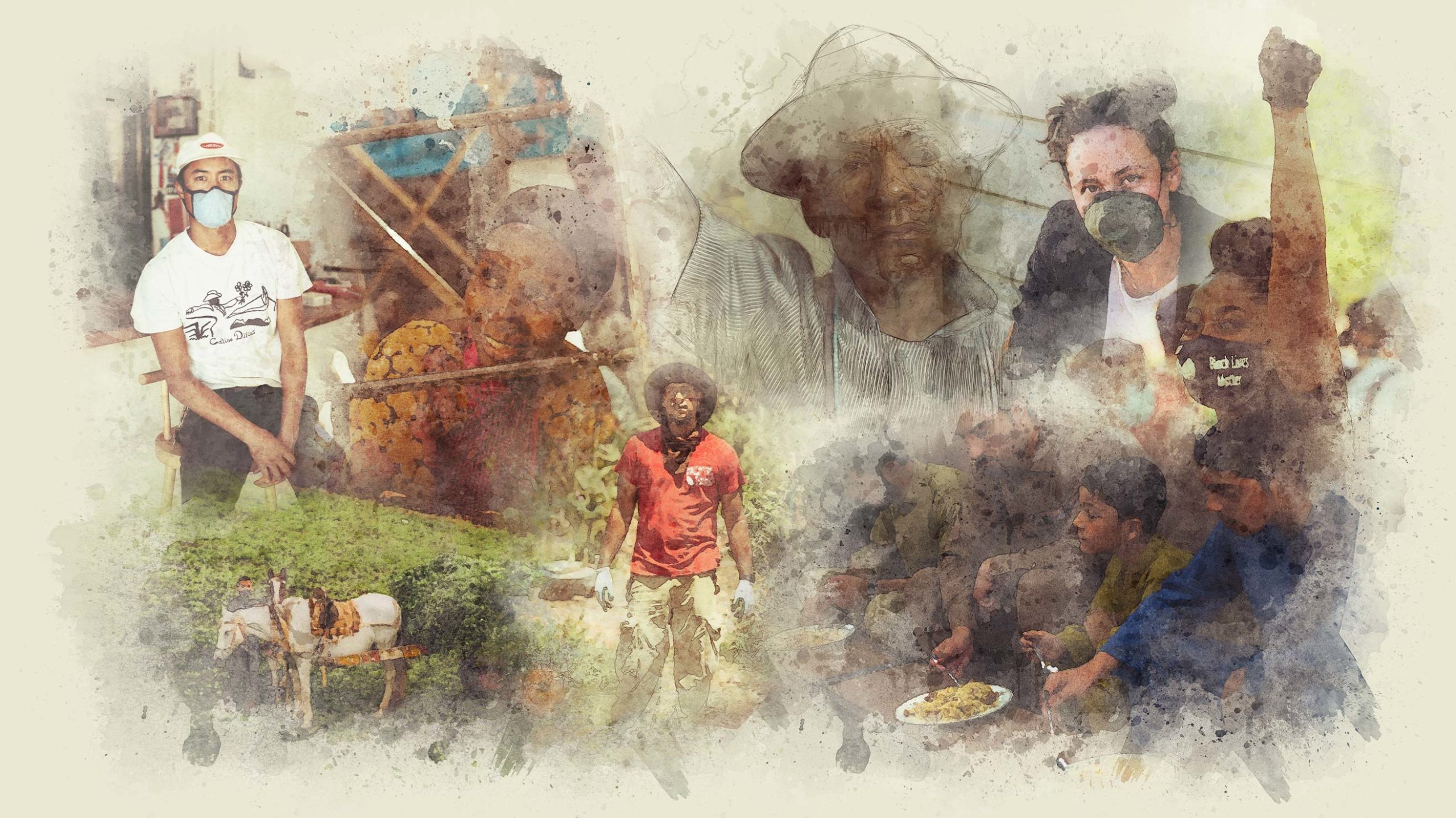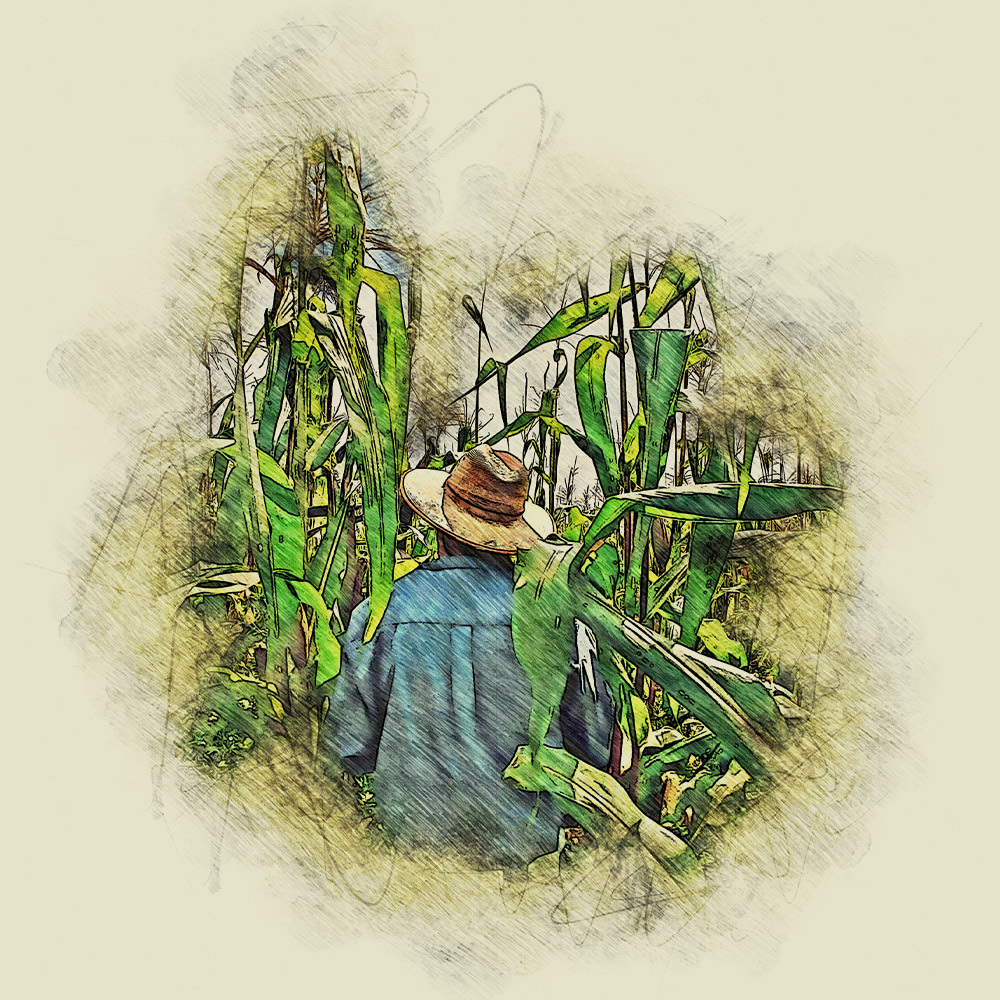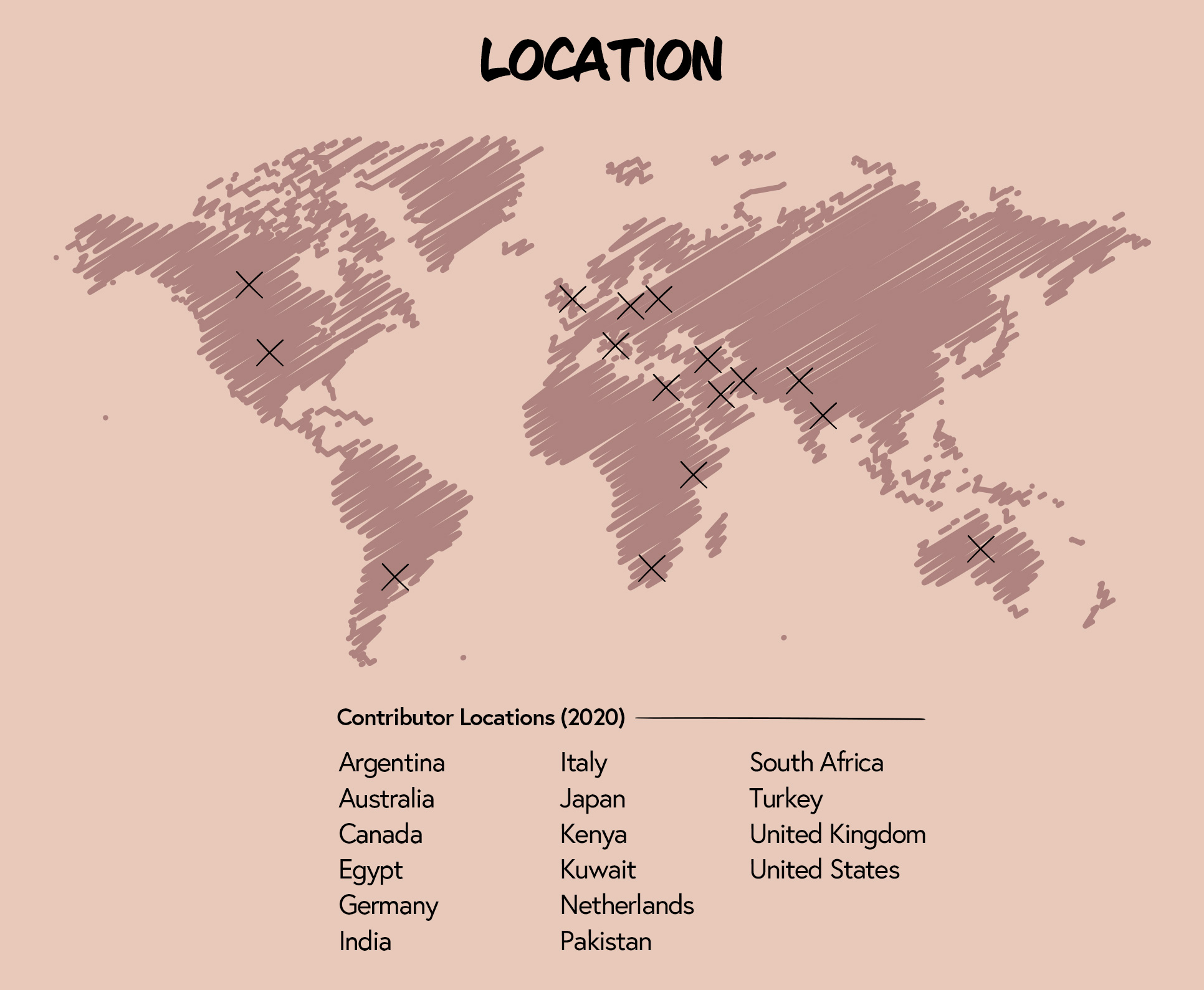
2020 in Review
A reflection on our work, the lessons we learned, and what’s next for Life & Thyme.
Throughout 2020, we asked ourselves repeatedly: How can Life & Thyme build a more equitable and informative future for readers and members alike?
During a time in which physically gathering was off the table, we strove to find our own way to bring people together. Life & Thyme’s membership program sparked conversations between readers around the world. We hosted webinars on topics ranging from the Italian way of life to queerness in the modern food industry, and started the Life & Thyme Book Club in which we could connect with members in a new and intellectual way.
This year has reinforced our idea that the best journalism is collaborative, and at a time when many of the most basic things have been complicated and murky, who we are, what we believe, and our mission have never been clearer. Life & Thyme is a global collective of correspondents. Our coverage prioritizes the intersection of the social, political and environmental issues we face today, all through the lens of food. It’s our mission to amplify underrepresented voices in our food systems, through in-depth, solutions-based journalism.
We believe in global citizenship through food—a responsibility that holds us all accountable for protecting foodways across borders. With a deeper understanding of issues that matter to our food systems and the people who work within them, we are more equipped to better understand how food plays a central role in systemic issues, policies and the environment.
At Life & Thyme, we are also accountable to our readers. It’s their financial support that exclusively powers our work. But the relationship is mutual; we encourage reader participation and invite members to be a part of the process of building our journalism.
As we reflect back on our year in our first editorial report, one thing becomes evident: we’re just getting started.
Contributors
The work we do at Life & Thyme would be impossible without our global collective of correspondents. This year, we had the opportunity to work with ninety-four contributors from sixteen countries. From Argentina to Egypt to Italy, our network reported stories at the intersection of the social, political and environmental issues we face today.
We believe that newsrooms should represent the communities they cover. We also believe in transparency throughout the journalistic process, which is why we’ve decided to include a breakdown of contributor data based on race and gender. Our data shows the contributors we’ve worked with in 2020 were predominantly white, female, and based in the United States.
For the data below, we’ve chosen to use the racial background categories as laid out by National Institutes of Health. Included in this data are writers, photographers and illustrators from the entirety of the 2020 calendar year.
Diversity in the newsroom is essential to the integrity of the journalism, and the data we’ve gathered is for our own accountability, as well as transparency. Our goal to build a more equitable future extends to our contributor hiring practices, and this year there was a gap between principle and practice.
White writers have historically shaped narratives, but their words and identities do not represent the transnational communities we cover. If we are to truly present solutions-based journalism, we should be looking toward communities whose voices have been largely silenced by traditional media.
Our commitment to inclusive journalism is a preeminent focus for us. In 2021, we’re looking forward to working with contributors from around the world who will lend their voices and new perspectives to our reporting.
Editorial
We published 128 global stories throughout 2020. Our journalism included reported pieces, commentary and recipes. In-depth, solutions-based writing was the overarching focus for our work. We strived to share stories that illuminated a means to change or a path toward a better future.

Immigration
“The Road From El Salvador To the American Restaurant” by Marisel Salazar details the journey of one undocumented immigrant from El Salvador to become sous chef of one of New York City’s top restaurants. And “How Immigration and Trade Policy Have Shaped U.S. Agriculture” from Ferron Salniker explores how a history of immigration, trade and discriminatory economic policies have made U.S. farms dependent on exploitable labor mostly by Latinx immigrants.
Social Justice
Ferron Salniker and Life & Thyme’s founder and Editor-in-Chief Antonio Diaz introduced us to New York chefs Kayla Davis and Rasheeda McCallum who founded the Black Chef Movement in “How Black Chef Movement Feeds and Fuels.” Life & Thyme’s Associate Editor Gia Hughes took us to Compton where Lemel Durrah of Compton Vegan provides plant-based options for his community and builds for a more promising future in “Compton Vegan’s Journey to Creating a Plant-Based Future.” In an interview with Antonio Diaz, Houston anthropologist and Black culture storyteller Marlon Hall considers the Black experience during the movement of the moment.


Foodways
Reporting from Egypt, Marianne Dhenin shares the story of local farmers in the occupied West Bank who hope a return to their roots will bring Palestine closer to food sovereignty in her piece, “Palestine and the West Bank Agricultural Struggle.” In “Puerto Rico’s Struggle for Agricultural Sovereignty,” Paola Nagovitch reports on how despite decades of policies discouraging Puerto Ricans from farming their lands, local farmers and activists lead the move to reclaim local agriculture in the face of crisis. In their op-ed, “The Future of Food Justice,” Saryta Rodriguez shares thoughts on the future of equity and opportunity. Julie Kunen illuminates the roots of regenerative agriculture, and its connection to the practices of Black and Indigenous farmers.
Identity
In “Culinary Colonization,” Aaliyah Miller explores the deep roots of Jamaican cuisine and its often-copied culture, which serves as an example of just how detrimental cultural appropriation really is in Bristol, England. Bailey Berg reports on how Native American-owned breweries are leaning into their heritage and expressing their Indigenous identities through their potent potables in “Reclaiming Indigenous Legacy One Beer at a Time.” Life & Thyme Senior Editor Stef Ferrari explores the ways in which staff diversity strengthens a team both in and out of the kitchen, and why that’s critical during the COVID era in “Kristen Kish Finds Strength and Family in Diversity.”


Recipes
Sharing a recipe is more than just a dish; it’s evidence of culture and heritage. We had the opportunity to explore food and stories from around the world through the recipes we published this year. June Kim shared a recipe for broiled mackerel lettuce wraps, a sweet and spicy Korean dish that serves as a connector between family members while apart. Sabine “Chef Bee” Mondesir provided a recipe in “The Legacy of Flavor: Haitian Legume,” where traditional flavors are layered to create a cultural moment at the table. And a recipe for fried apple cakes by Jessica Quinn connects and offers comfort through the ages.
COVID-19
We shared firsthand looks at the effects of COVID-19 on different facets of the food industry through our Coronavirus Diaries project. In Los Angeles, Andrea Borgen Abdallah, the general manager and owner of Barcito, puts forth the case for saving restaurants during the age of COVID-19 in the candid op-ed, “No Path To Survival for Independent Restaurants Without Rent Relief,” following the closure of the city’s dine-in service. Nicole Ziza Bauer addresses the invaluable role of growlers as to-go sales of beverages spike in “Hail To the Pail.” In “How Immigrants Plan To Cope With Holidays Away From Home,” Brishti Basu explores how immigrants must find new ways to celebrate the holiday season during the pandemic. A conversation with Camilla Marcus—founder of New York City’s west~bourne and co-founder of ROAR—and Oyster Sunday’s Elizabeth Tilton provides perspective on the needs and challenges of the restaurant industry nine months into the pandemic in “Winter Is Coming: Restaurants Face-Off With Shutdowns and Congress.” Finally, Keegan Fong of Woon Kitchen in Los Angeles shares his experience as a restaurateur during the pandemic in “Portraits From a Pandemic: Woon Kitchen.”


Video
This year, Life & Thyme produced Boiling Point: The Fight to Save America’s Restaurants, a documentary focusing on the COVID-19 crisis.
In March, amid chaos caused by inconsistent and vague stay-at-home orders, sweeping restaurant closures threatened destruction across the food industry. Since those first moments, the COVID era for the food industry has been defined by a lack of leadership, resources and recognition from the government. In America, our food system has long been a house of cards; the pandemic just happened to be the tornado to take it down.
Life & Thyme immediately set to work documenting the unprecedented events unfolding daily. Boiling Point chronicles this catastrophic moment through the perspective of frontline food workers, while exploring the deep cracks in the system that led to this crisis.
By following proprietors Tyler and Ashley Wells of All Time in Los Angeles, Executive Chef Suzanne Cupps of 232 Bleecker in New York’s West Village, Jennifer Reichardt of Liberty Duck Farms in Sonoma, California, and the humanitarian efforts of No Us Without You in Los Angeles, we get a boots-on-the-ground perspective, while longtime industry leaders like Dominique Crenn, Curtis Stone, Edward Lee, Aarón Sánchez and others provide critical context for how we arrived in this moment, and what’s really at stake.
Today, uncertainty persists. Resolutions still feel elusive as there continues to be a lack of meaningful aid. Restaurants are woven into the fabric of our communities and through our work with Boiling Point, we hoped to illuminate the crucial fight for their survival.
While COVID-19 kept us from gathering in person, we also offered a series of webinars where we shared conversations on topics ranging from “The Food Industry’s Undocumented Labor Force” to “Building Life & Thyme’s Editorial and the Current State of Journalism.” Streaming has offered unparalleled accessibility and allowed us to not only engage with those joining us on the webinars, but also with viewers from across the globe. This year, we laid the groundwork for our webinar program; and next year, we look forward to connecting with more experts around the globe.
Life & Thyme Post
In March, we published The Extinction Issue, which explored the concept within our food systems, our role in accelerating it, as well as the measures we are taking to combat or change the unsustainable exploitation of resources. The stories gave a glimpse into the fragility of our surroundings and what we take for granted. “From The Future of Maize with Masienda” to “When the Rain Doesn’t Come,” the issue urged action over acceptance of an avoidable future.
The At Home Issue came as a response to the ordinances that went into place as COVID-19 swept the globe. As we were instructed to stay home, we offered contributor recipes to help make use of what lived in the back corners of our pantries, whether a stockpile of beans or the flour that became a hot commodity for freshly forged sourdough home-bakers.
Summer brought The Reboot Issue—a statement about our future. It was an opportunity to ask what we could be doing better as a society and a publication. The pandemic illuminated the fragility of the systems we’ve built, and Reboot explored solutions that could be more than stopgaps.
And while Reboot focused on upending systems, the following issue on Tradition was about building new ones, and adapting storied practices to the requirements of this day and age. A story from Kevin Vaughn grappled with Argentina’s deep history as a global beef producer. We also heard from Marianne Dhenin who explored the tradition of rearing poultry and livestock on Egyptian roofs, which has helped sustain families in crowded urban areas for generations. Nine months into the pandemic, we examined the constants we’d once taken for granted and how they had been swept away, leaving fertile grounds to structure new traditions for our future. Plus we published a Life & Thyme first: our very own crossword written by our editors and contributors.
Membership
The heart of the Life & Thyme community, and the reason we’re able to do what we do, are our members. As an ad-free publication, we depend entirely on reader support to power our journalism, and we’re forever grateful to those who have chosen to join us on this journey. To date, we have Life & Thyme members in twenty-eight countries. In this time where we’re more isolated than ever, we have the privilege of working with someone in Paris, for example—5,649 miles away from our home-base of Los Angeles. We believe coming together and sharing ideas across borders and cultures is paramount to our growth as global citizens.
We also feel strongly that readers should be a part of our journalism, and we’ve developed our membership program around offering touchpoints to further connection with our community. This year, we introduced new member programs, including a member-exclusive Discord channel and book club that offer direct lines to our editors, contributors, and other community members. We also reached out to members directly, and via membership surveys, to gather feedback around their interests, their overall Life & Thyme experience, and what we can be doing better.
Being a member-funded publication is not without its challenges; without advertising revenue, the financial sustainability of this model is precarious and relies on membership goals, and no matter how difficult it may be to ask for help is, we will always require support. Every member is essential to our survival.
This year, we also introduced Life & Thyme Brigade, our growing network of industry professionals to whom we look for guidance in building a stronger future for our food systems. We had the honor of welcoming Chef Claudette Zepeda, Bricia Lopez, Chef Nyesha Arrington, Chef Neal Fraser, Chef Brooke Williamson, and Ellen Bennett as the first six Brigadiers.
What We’ve Learned, and Looking Forward
Looking back on this year, we’re immensely proud of what we’ve accomplished and grateful for everyone who has stuck with us—but there is always room for us to improve. Heading into 2021, we hope to further explore the way food intersects with our global systems, continue to deepen our understanding of topics—including immigration, cultural appropriation, food sovereignty, the climate crisis, and more—and work with correspondents around the world who can provide context.
As we evolve, we hope to also grow our membership program. Members are at the heart of our work, and we are already developing new avenues to invite them into the processes of our journalism.
We’ve learned so much this year—from our community, our contributors, and from each other. With unending support from those around us, Life & Thyme has grown from a publication for the culturally curious to one that is committed to building a more equitable and informed future through solutions-based journalism. We can’t wait to see what comes next.











Our comments section is for members only.
Join today to gain exclusive access.